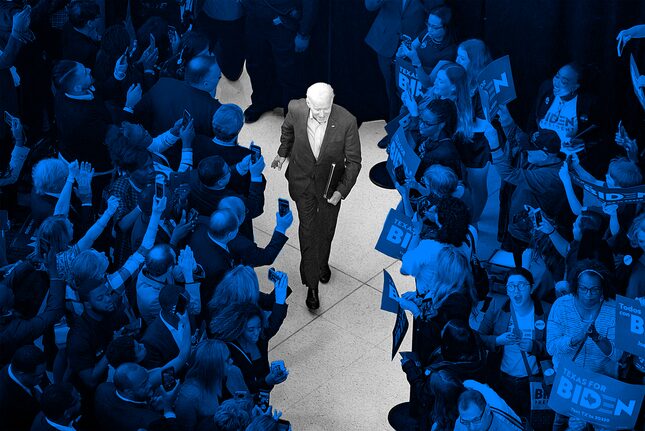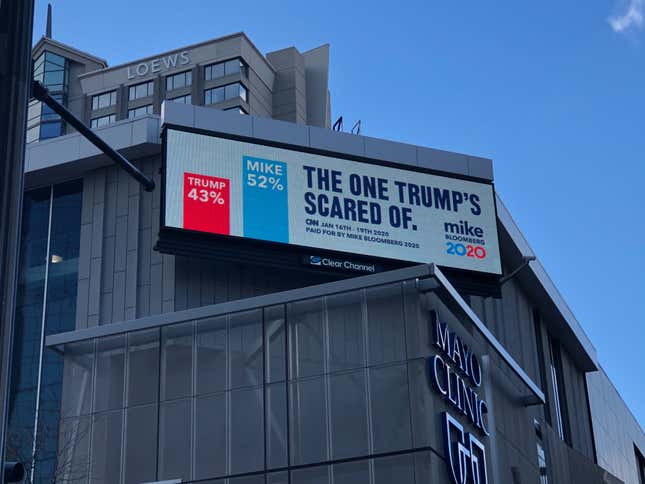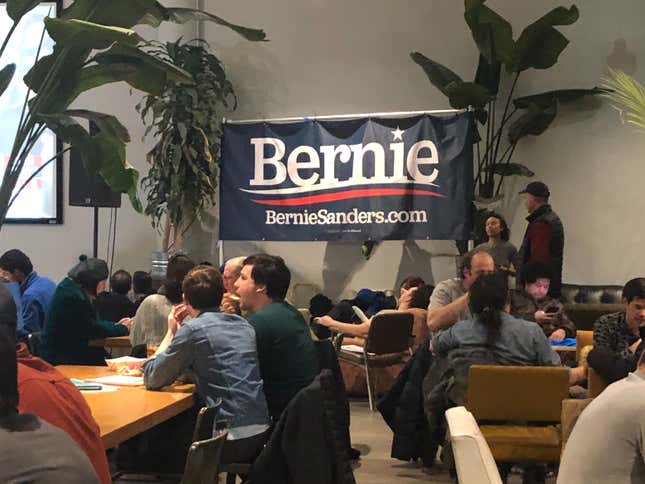They Were There All Along
Politics
Photo: Getty
MINNEAPOLIS, MN—This was supposed to be a story about the women who had decided to cast their vote for Amy Klobuchar. The college-educated, largely suburban white women who kept Klobuchar in the race, who created her so-called Klobmentum in New Hampshire, and who, according to hundreds of pundits, are staunch moderates who are key to a Democratic victory in 2020.
Jezebel’s Deputy Editor and I have been talking about these voters since Kirsten Gillibrand was still in the race; women who knitted pink pussy hats and marched down the National Mall on the day Donald Trump was inaugurated; the women who cheered in New Hampshire when exit polls showed she was winning white college-educated women. They are also women who are unbothered by Klobuchar’s inability to attract a diverse coalition or allegations that she abused her staff or that she wrongfully prosecuted a black teenager. There was a story here, we thought, about these women—the kind of women that Jezebel rarely writes about—who are a vocal, powerful group of voters aligning behind a woman candidate whose appeal seemed inexplicable.
But this is not a story about those voters since Klobuchar announced the end of her campaign while I was in a plane, somewhere between my home in Florida and a layover in Texas. By the time I arrived in Minneapolis, Klobuchar was in Dallas on stage with Joe Biden telling her supporters to “vote for Joe.” “Vote for decency. Vote for dignity. Vote for a heart for our country,” she said in a speech that was equal parts endorsement and concession. I watched Klobuchar’s bob bounce and Biden praise her “grit and determination” in the lobby of my hotel where dozens of teens in town for a conference gathered, talking so loudly that their voices bounced off the tile floor. A group of them sang “Wonderwall” in unison.
Since my story evaporated, I looked for another one. I went to Klobuchar’s campaign headquarters to see if anyone was packing up and wanted to talk. No one was there. I spoke to Bernie Sanders supporters and Elizabeth Warren supporters. I couldn’t find any Mike Bloomberg supporters even though he spent $11.4 million in the state (Pete Buttigieg and Klobuchar finished second and third in money spent, spending $360,579 and $274,996 respectively). I also couldn’t find any Joe Biden supporters but that’s because I was in the wrong suburb; Biden ended up beating Sanders in Hennepin County by slightly more than one percentage point. I reached out to campaigns for comment. I spoke to volunteers. I stood outside of a polling location and spoke to voters.

The story that emerged is a story that everyone has read because it’s a regular feature of election-year reporting. It’s a story that tells readers what they already know: Voters willing to speak to a shivering reporter at their polling location are very enthusiastic about their candidate, volunteers are even more enthusiastic, and campaign communications directors are very good at more or less repeating themselves. The genre presents itself as serious insight into the average voter; it is knowing in tone and self-consciously shows its work, documenting consequential details. Taken together, it’s supposed to tell the reader something meaningful about their own state or another state or about voters in places where they have never been and may never go. Sometimes it might reflect on the expansive size of the United States of America bridged by a shared ideology or admiration. All of this meaning, the story suggests, can be deduced from a single voter outside of a campaign rally. But for all of the work, all the transcribing of gestures or manner of speech or quirky clothes, the genre has very little to say.
Elizabeth Warren’s Minnesota headquarters is located in a brick factory that’s been converted into an airy office building. Surrounded by doctors’ offices, it’s hard to find, save for the Minnesota for Warren signs that mark its doors. The office is stark, its only color liberty green Warren signs and the LGTBQ+ rainbow signs taped to the wall, and practically abandoned. Just three volunteers sit at the desks to make calls with a handful of campaign staff. Rita Farmer, Field Organizer for the Twin Cities Mobilization Hub, tells me that everyone is out canvassing and gestures with her perfect manicure to the empty space. “Have you already voted for one of the qualified Democrats?” I heard a volunteer asking a potential voter on the phone. Later, that same volunteer excitedly tells another voter that they are the second person they’ve called that they actually know.

Lorraine Blake, 73, is introduced to me as one of Minnesota for Warren campaign’s most dedicated volunteers. Blake, a retired attorney, has canvassed for Warren both in Iowa and Minnesota. She is petite and soft-spoken even as she tells me why she’s supporting Warren. She likes Warren’s policies and she lists the ones most important to her, ending with climate change. She’s diplomatic when I ask her about Klobuchar. “Well,” she says, “she was a prosecutor and I was a defense attorney.” She’s even more diplomatic when I ask her about Bernie Sanders. Blake adds, however, that she will vote for the Democratic nominee, no matter who it is.
Farmer walked me back to the front of the office, most of which is empty space. She tells me that the campaign office technically only goes to a desk she points to and the open space is technically another unrented office. “I tell people it’s room to expand in November,” she says. I noticed her perfect manicure again.
-

-

-

-

-

-

-

-

-

-

-

-

-

-

-

-

-

-

-

-

-

-

-

-

-

-

-

-

-

-

-

-

-

-

-

-

-

-

-

-








































